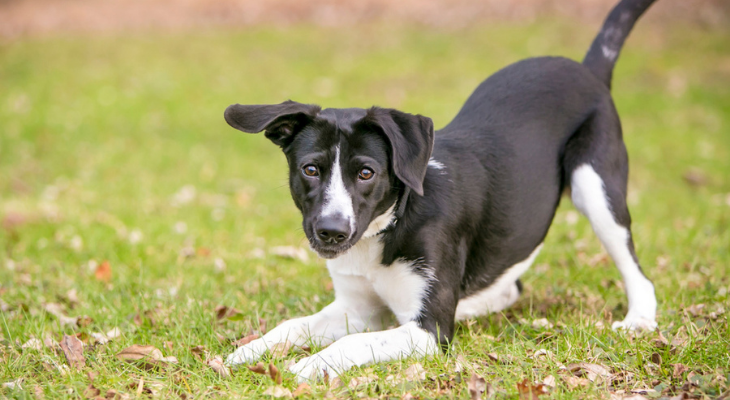
Understanding Your Dog's Body Language
Barking isn't the only way dogs communicate. In fact, your dog's body language provides subtle clues that can help you figure out your furry friend's moods.
Deciphering Your Dog's Signals
Dogs have excellent non-verbal communication skills, although their body language may be a little difficult for their families to decipher at times. In fact, facial expressions, tail position, and posture provide important information about your pet's state of mind.
It's much easier to determine if your dog is happy, confident, stressed, or fearful when you know what the changes in your pet's body language mean. Here's what your dog's body language may be telling you:
- I'm Calm and Happy: Relaxed ears and eyes, a slightly open mouth, and a relaxed posture are signs of a calm, confident dog. Happy dogs tend to hold their tails in a neutral position and wag them slowly from side to side. If your dog is excited to see you, its entire body may wriggle with anticipation.
- I'm Stressed: Separation anxiety, a move to a new home, or the introduction of a new person or pet can stress your dog. Signs of stress include whining, shaking, pacing, yawning, shedding, drooling, and panting. You may also notice that your furry friend doesn't make eye contact with you or has dilated pupils. Licking the lips and resting most of the bodyweight on the back legs can also be signs of stress.
- I'm Afraid: Fearful dogs, like stressed dogs, also lick their lips, yawn, or avoid eye contact. A fearful dog may cower, shake or hold its tail between its back legs. Flattened ears, lip licking, lowered head, and urination or defecation can be signs that your dog is afraid. The whites of your dog's eyes may be more visible if something frightening has occurred.
- I'm Sick or in Pain: Just like you, your dog may feel a little cranky when sick or in pain. Pain or illness can even cause normally laid-back dogs to become aggressive in some cases. Other signs of illness may include flattened ears, crying, whimpering, howling, growling, panting, limping, shaking, fatigue, lack of appetite, hunched posture, limping, frequent licking and grooming, or disinterest in usual activities. Dogs may also hide when sick, an instinct that helps protect them from predators in the wild.
- I Want to Play: The play bow, a position that involves raising the back end, while putting the front legs and chest on the ground, is a clear sign that your dog is ready for a little playtime. Other signs that may indicate that your furry friend is ready to play include floppy or relaxed ears, open mouth, protruding or visible tongue, almond-shaped eyes, and relaxed body posture. Your playful dog may roll over on its back, exposing its belly for rubbing.
- I'm Aggressive: If a dog is feeling aggressive, it may keep its tail high and twitch it back and forth rather than wagging it fluidly. Erect ears, stiff posture, growling, snapping, barking, bared teeth, head butting, nipping, or lunging without making contact can all be signs of aggression. An aggressive dog's fur may also stand on end, although this can also occur if a dog is stressed, upset, or interested in something, according to the American Kennel Club. Teaching children the signs of aggression in dogs can help them understand when it's a good idea to avoid your pet or other dogs.
Learning to interpret your dog's body language offers a simple way to enhance your relationship with your dog. Do you have any concerns about your pet's body language or health? Give our office a call to set up a convenient appointment.
Sources:
American Kennel Club: How to Read Dog Body Language
